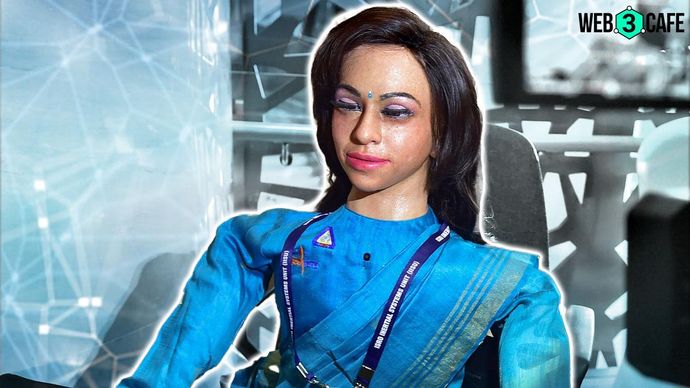Introducing Vyommitra, the female space robot that ISRO is sending on Gaganyaan mission
The humanoid robot, Vyommitra, will be launched in the second stage of the Gaganyaan mission.

Highlights
- India plans to introduce a pioneering female robot named 'Vyommitra' into the Gaganyaan mission
- Vyommitra replicates human functions in space & interacts with an environment-controlled life support system
- The first testing mission for Gaganyaan will take place in the first & second weeks of October
Following the triumphant achievement of Chandrayaan-3's successful landing on the moon's south pole, ISRO remains dynamically engaged. It will launch a unique robot dubbed ‘Vyommitra’ into the orbit on the next mission.
Dr. Jitendra Singh, the State Minister for Space, announced on 26 August 2023, that the testing for ISRO's Gaganyaan missions will commence in October. He also mentioned that the next part of the mission will involve sending a female humanoid robot named Vyommitra into space.
Who is Vyommitra & why is it developed?
Vyommitra, the female humanoid, was introduced during the 'Human Spaceflight and Exploration: Present Challenges and Future Trends' event in 2021. It is a unique creation combining the Sanskrit words Vyoma (space) and Mitra (friend) and holds a special role in space exploration. This half-humanoid prototype has been crafted for India's pioneering Gaganyaan mission, which aims to mark the country's human spaceflight capabilities.
It can effectively monitor module parameters, issue alerts when necessary, and manage essential life support operations. The robot adeptly handles tasks like operating switch panels, making it a versatile asset. Moreover, Vyommitra excels as a companion for astronauts, engaging in conversations, recognising crew members, and providing insightful responses.
With its advanced design, this half-humanoid is designed to replicate human functions in space and interact smoothly with the environment-control life support system.
What's the goal of Gaganyaan Mission?
For India's space efforts, the Gaganyaan Mission represents an important objective. The pandemic-induced lockdowns resulted in inevitable delays for the human launch that was originally scheduled for 2024. Its main objective is to demonstrate India's capacity for carrying out manned space missions.
The strategy involves launching a three-person crew into an orbit 400 kilometres above the planet's surface, sending them on a three-day mission, and then safely bringing them back to Earth by landing in the Indian Ocean.
For this tremendous undertaking, it is necessary to develop essential technologies, such as the human-rated LVM3, which serves as the Gaganyaan mission's launch vehicle and guarantees the crew's safety the whole way.
Also read
Vyommitra: India's first space robot
Diving into the heart of this remarkable journey, Minister Jitendra Singh disclosed a captivating detail – India's plan to introduce a pioneering female robot named 'Vyommitra' into the Gaganyaan mission. It is planned for the first or second week of October to conduct the first test flight.
In the next missions, ‘Vyommitra’ herself would set out on a space journey to highlight India's advancements in space technology and exploration.
Aditya L-1, India's solar ambition
In the meantime, ISRO is actively preparing for the launch of ‘Aditya L-1,’ India's first solar mission, which aims to shed light on the hidden mysteries of our solar system's brilliant core. This mission's goal is to examine the Sun's fascinating phenomena, such as flares, the corona, and electromagnetic waves, using specialised equipment.
The launch window for the spacecraft is planned for the first or second week of September. It will launch and travel for 120 days to reach the Langrage point of the sun, its intended target.
Paving the way for space exploration
As India's space ambitions develop, these subsequent missions promise to attract the world's attention and add to our understanding of the universe. The upcoming trials of the Gaganyaan mission, together with the awe-inspiring inclusion of 'Vyommitra,' signal a new age of human spaceflight for the country.
Concurrently, 'Aditya L-1' carries the prospect of revealing our sun's cryptic mysteries and putting light on its intriguing occurrences. With its continuous devotion to scientific discovery, India is definitely propelling itself to the forefront of the global space exploration stage.
